Rapanui/Hanga Roa
by Serge Kahili King
Rapanui Photo Index
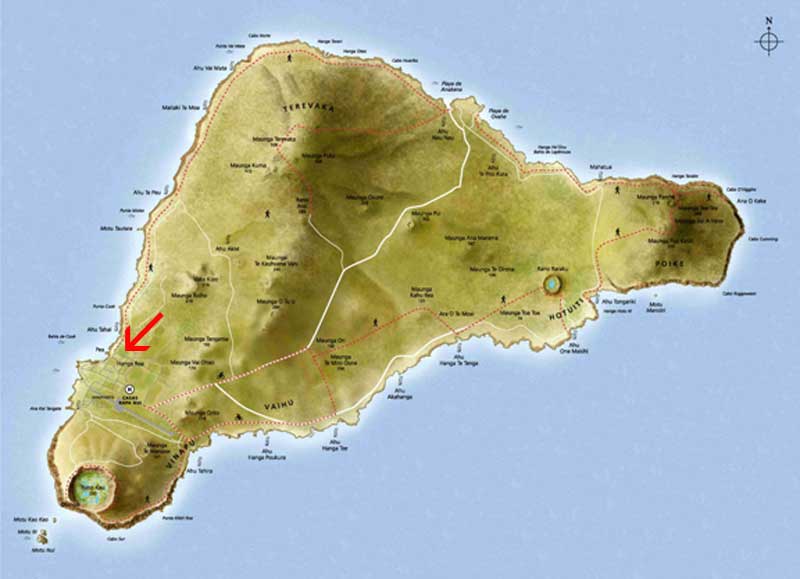
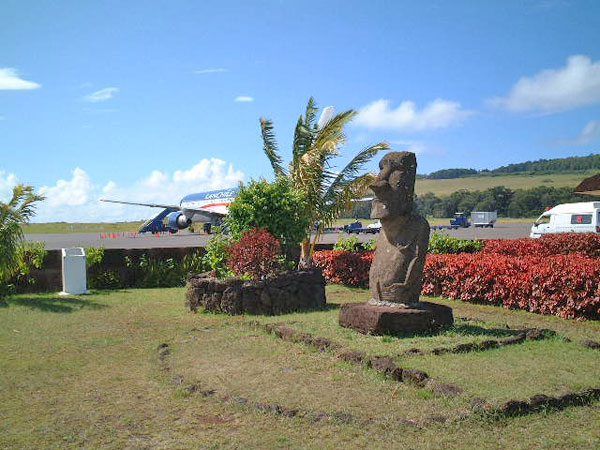
Susan, Malie, and I with the building-filled valley of La Paz behind us.
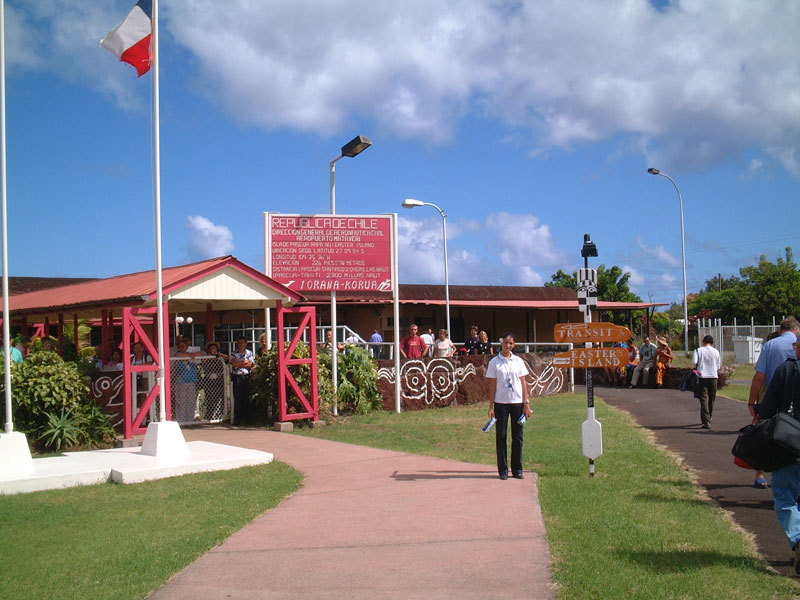
Heading in to the tiny terminal. They donÕt want you to forget that Rapanui is owned by Chile.
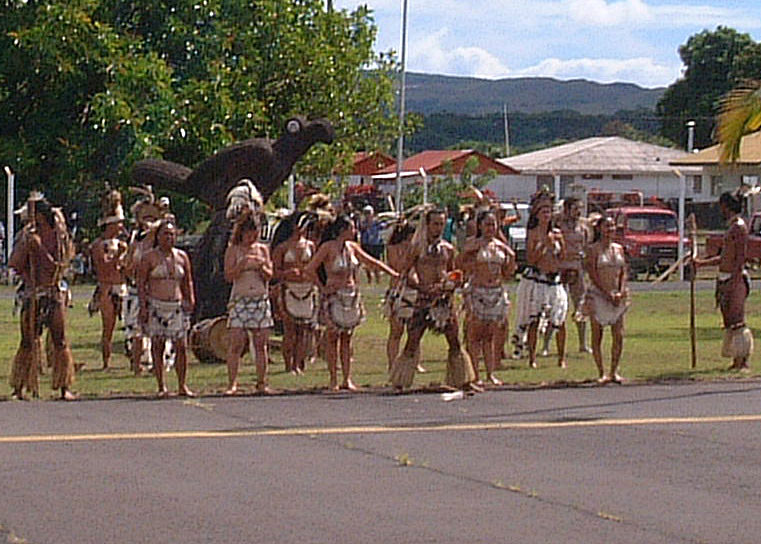
A Rapanui group waiting to greet Maori visitors.
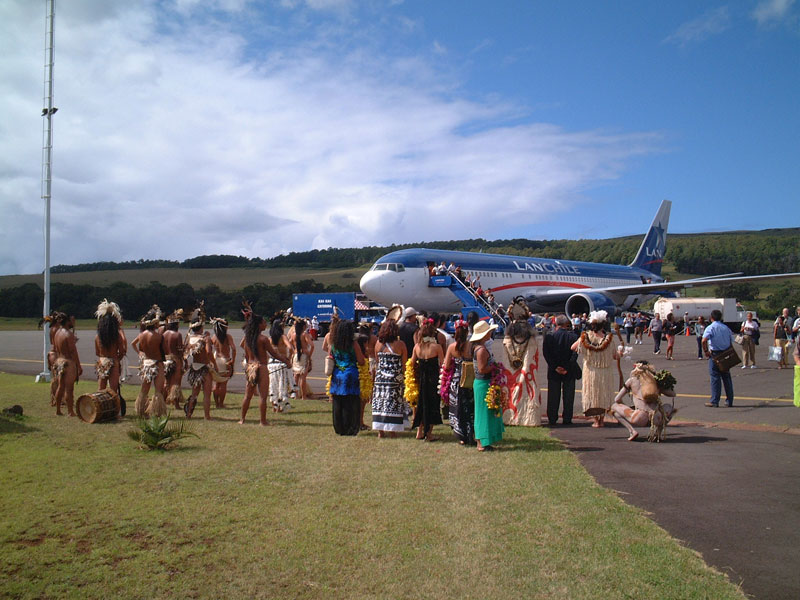
A view of the same group from behind.
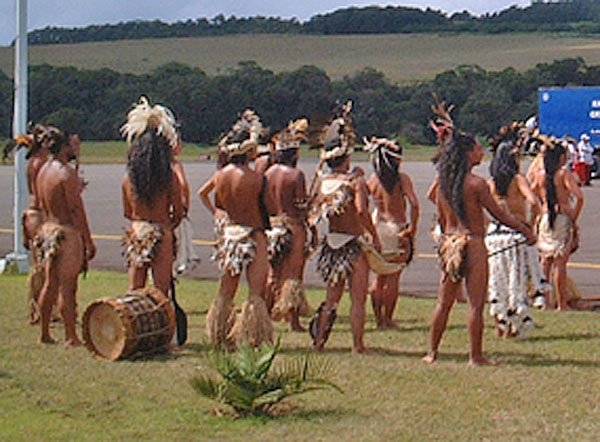
Close-up of the left end of the group. Note the combination of feathers and tapa cloth in their costumes.
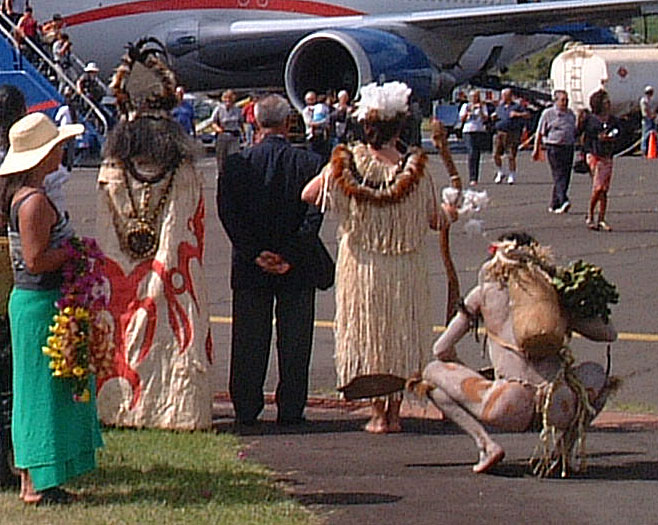
Close-up of the right end of the group. Note the chief in his tapa cloth cape on the left, the grass outfit on the woman in the middle, and the shaman figure on the right in bodypaint.
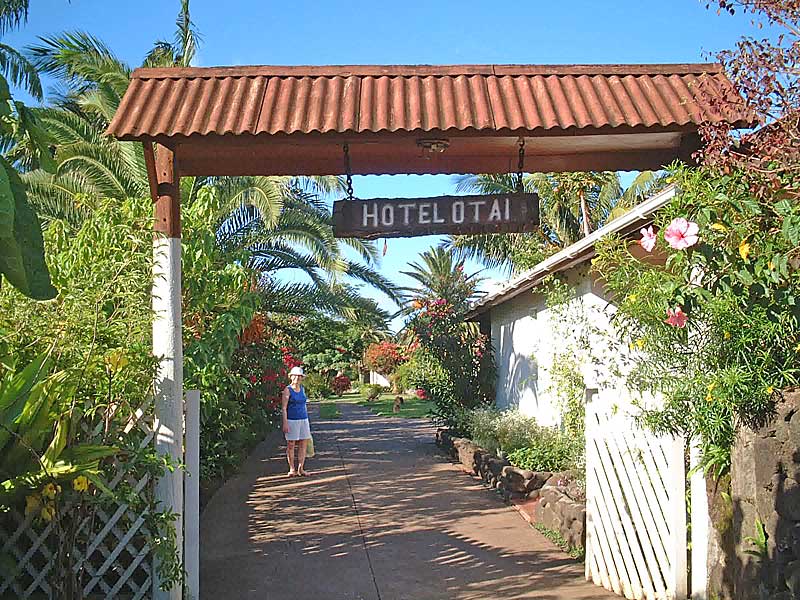
The hotel where we stayed. You can see how lush it looks.
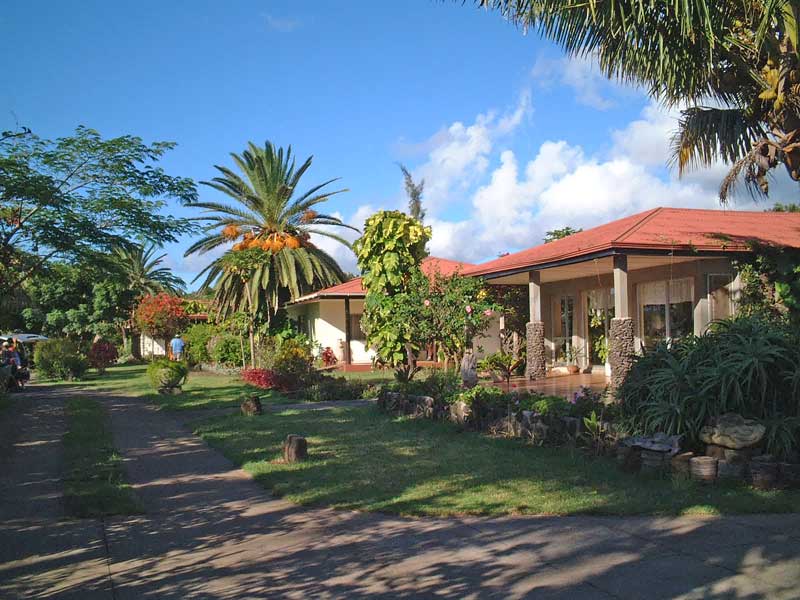
The hotel grounds, with our dining room on the right.
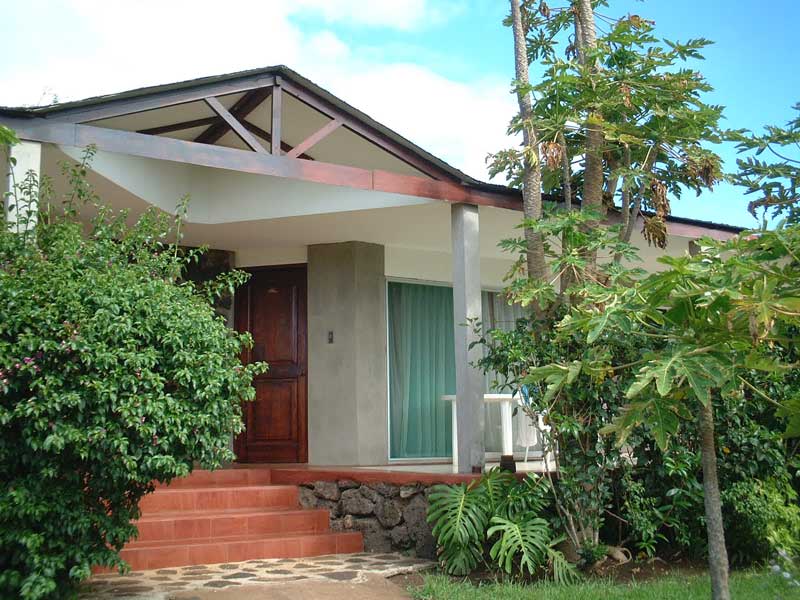
Our room, acoustically oriented to receive all the sounds from the festival a half mile away, and geographically oriented so as to exclude any wind.
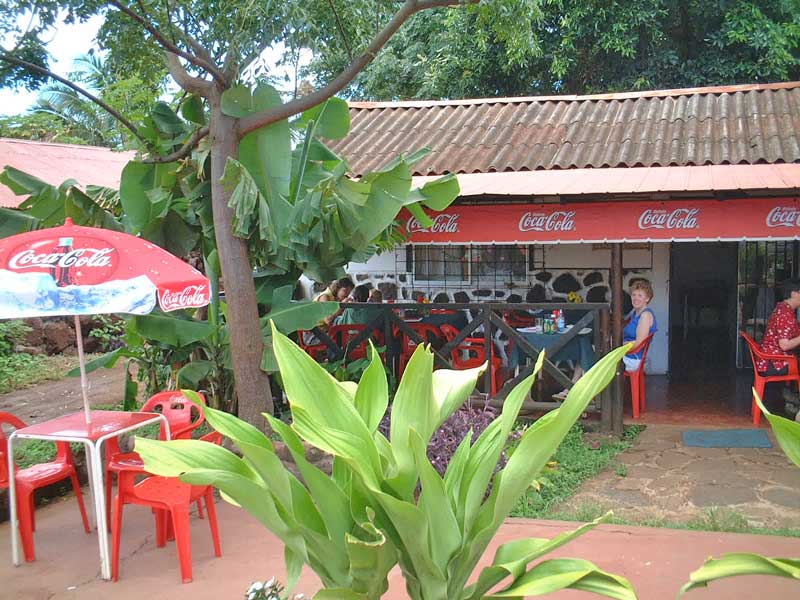
A tiny restaurant where we had lunch.
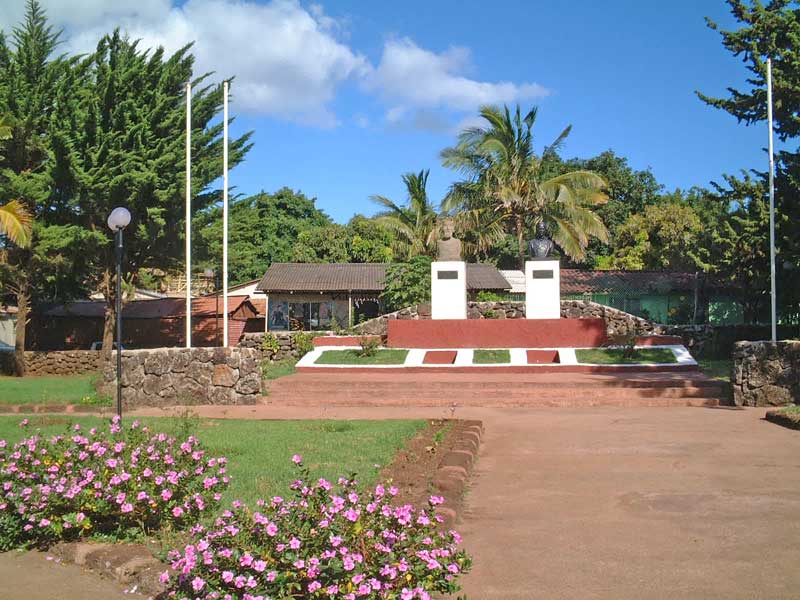
A small park in the center of town features the busts of two men.
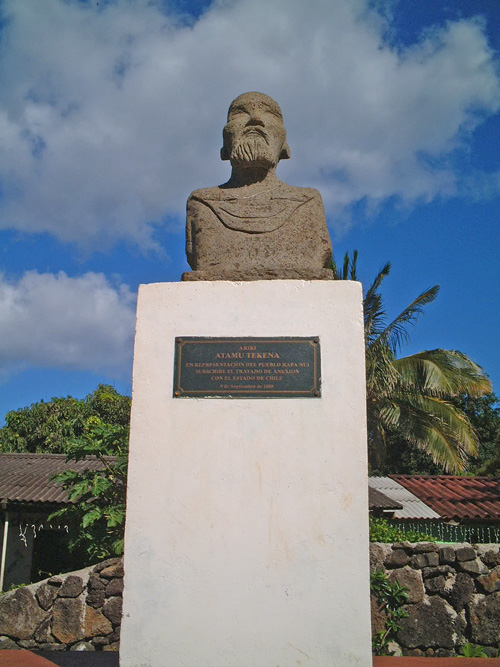
The one on the left is Ariki Atamu Tekena. Ariki is the same as the Hawaiian AliÕi, meaning Chief. This is the Rapanui chief who signed the Chilean treaty of annexation of Rapa Nui in 1888. The other bust is of the Chilean captain who also signed it.
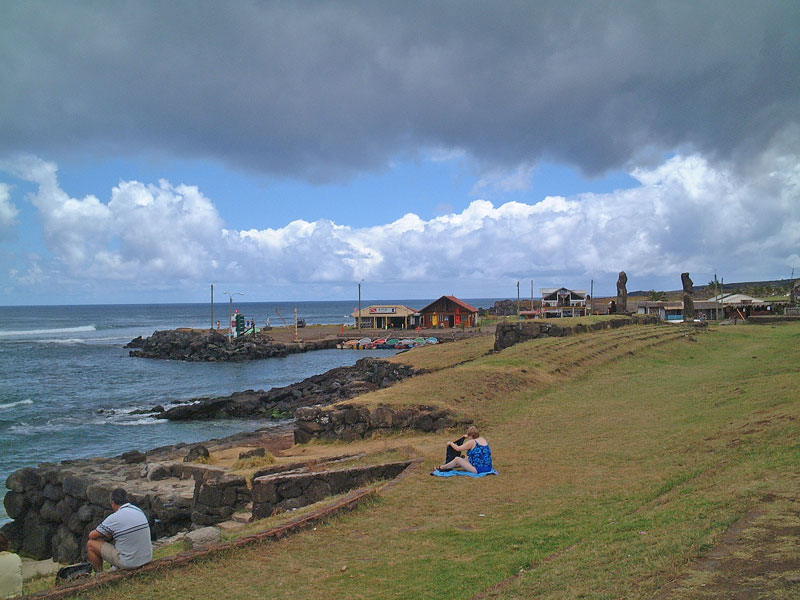
The sleepy port of Hanga Roa. In front of and to the right of the woman in the center are the remains of an ancient "ahu," or platform. "Ahu" is the same as the word for "altar" in Hawaiian. The white roof in the center right of the photo is the restaurant where we ate most of the time.
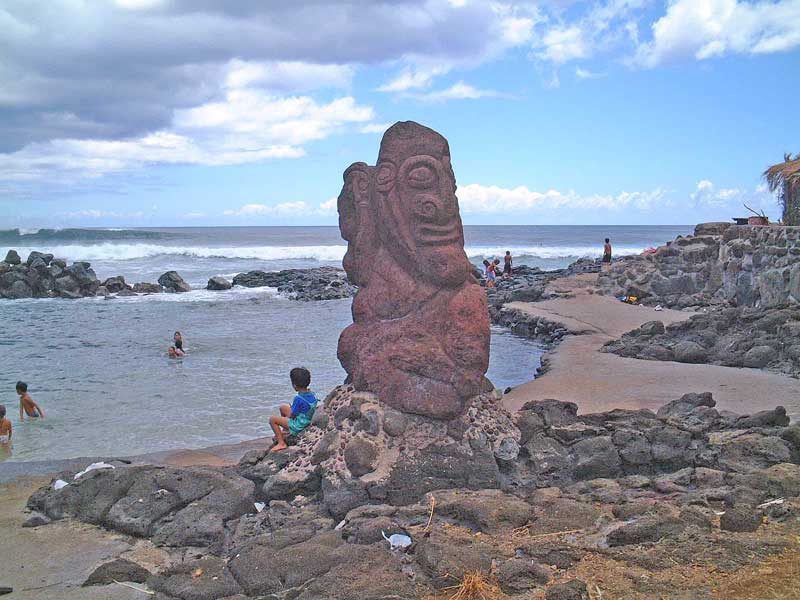
This is Vare, or Varevare, a small beach near our hotel. The statue is probably a modern carving, as it is unlike anything else on the island.
Top of Page
Send comments to
Serge King